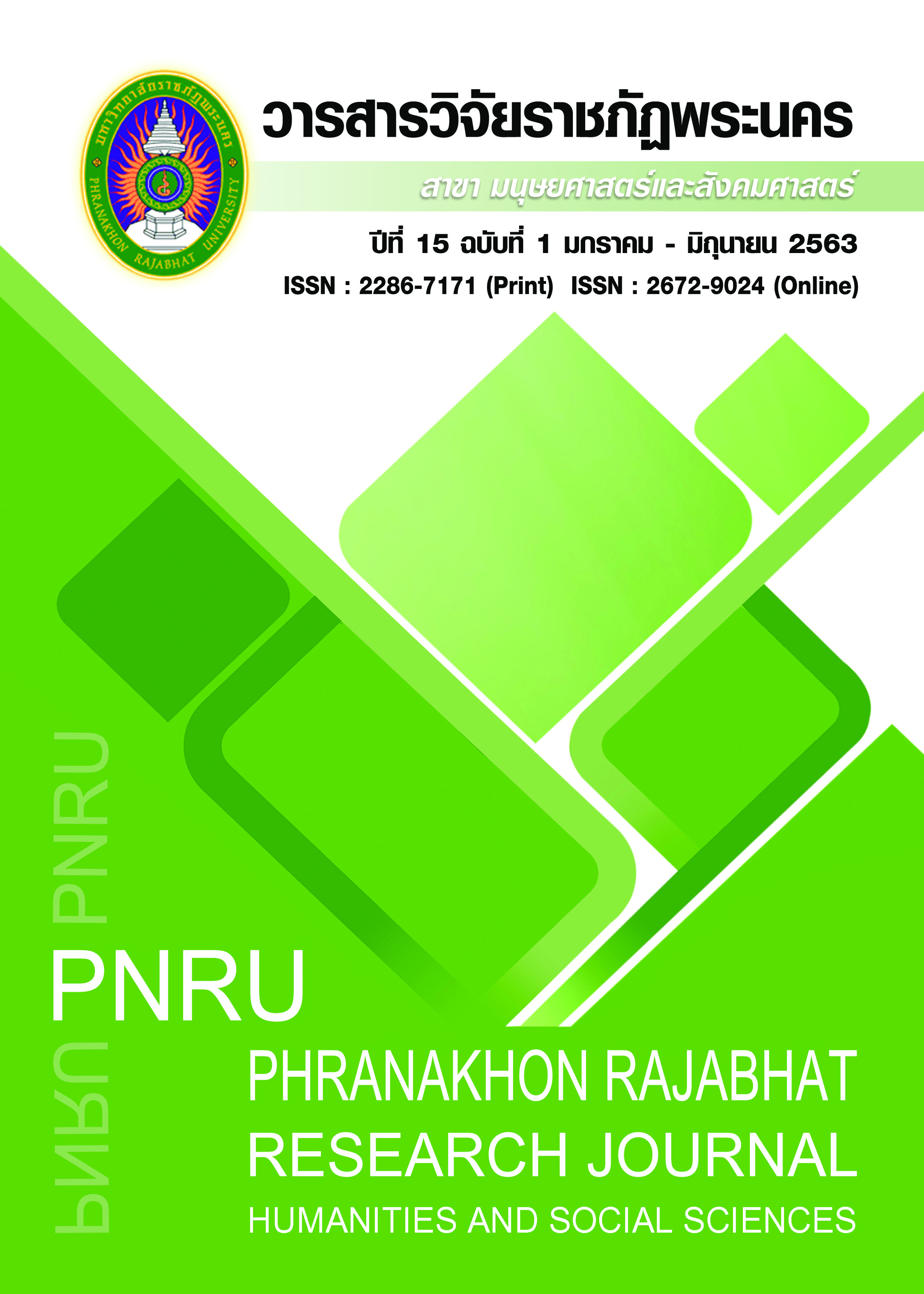ASSESSING THE IMPACT OF SCHOOL AND FAMILY EDUCATIONAL RESOURCE INEQUALITY ON ACADEMIC OUTCOMES OF LOWER PRIMARY SCHOOL STUDENTS IN TAK PROVINCE
Main Article Content
Abstract
The purposes of this research were to (1) examine characters of family and school educational resource inequality among lower primary school students in Tak province; (2) assess the impact of family educational resource inequality on academic outcomes of students in Tak province; (3) assess the impact of school educational resource inequality on academic outcomes of students in Tak province. The samples used in the research were 3,021 third grade students in 173 schools under the Tak primary educational service area office 1 and 2, where students were selected through two-stage sampling. The research tool comprised questionnaire measuring educational resources in families (α=0.743) and schools (α=0.746). Which were responded by student's parent and class instructor, respectively. Data was analyzed through latent class analysis and multi-level analysis. The results were as follows (1) family educational resource inequality was classified into 4 distinct groups. The majority of students (38.83%) were classified in group with low family educational resources. School educational resource inequality was classified into 3 distinct groups. Most of the schools (42.78%) were classified in group with greater amount of educational resources (2) family educational resource inequality had a significantly affected on student academic outcomes. Students with high level of family educational resources and female students were more likely to achieve high academic outcomes (3) school educational resource inequality had a significantly affected on student academic outcomes. Students in school with high level of school educational resources were more likely to achieve high academic outcomes.
Article Details
Each publish articles were copyright by Phranakorn Rajabhat University
Any contents which appeared in each articles in the journal were authors personal opinion. It did not relate to Phranakorn Rajabhat University and other instructors in the university. Each authors would take responsibility on their articles. If there are any mistake, the authors will take responsibility themselves
References
Baiya, N. (2012). An assessment of educational inequality in Mathematics and Science study at the upper secondary level. M.Ed. Program in Educational Evaluation. Faculty of Education, Sukhothai Thammathirat Open University. (in Thai)
Bhiromrat, K. (2011). Factors effected to the learning outcome according to Basic Education Curriculum B.E. 2551 of Mattayomsuksa 1 and 4, Demonstration School Suansunandha Rajabhat University (Funded by Suan Sunandha Rajabhat University). (in Thai)
Homhuan, E. (2013). An impact analysis of cram school’s effects on educational value-
added outcomes and educational inequality in Science study at the upper secondary level. M.Ed. Program in Educational Evaluation. Faculty of Education, Sukhothai Thammathirat Open University. (in Thai)
Kijratphorn, P. (2012). Inequality in Thai Education: source and solution. Academic Journal Phranakhon Rajabhat University.3(2), 213-216. (in Thai)
Ngudgratoke, S. (2009). Quality of teaching science and the ability of Thai students: Findings and policy recommendations from international student assessments. (Good Research National Research Council Award 2009). (in Thai)
Organisation for Economic Co-operation and Development. (2013a). PISA 2012 Results: What Makes Schools Successful? Resources, Policies and Practices (Volume IV). Retrieved March 23, 2018, from https://www.oecd-ilibrary.org/education/pisa-12012-results-what-makes-a-school-successful-volumeiv_9789264201156-en
Organisation for Economic Co-operation and Development. (2013b). PISA 2012 Results: Excellence through Equity: Giving Every Student the Chance to Succeed (Volume II). Retrieved March 23, 2018, fromhttps://www.oecd-ilibrary.org/education/pisa-2012-results-excellence-through-equity-volume-ii_9789264201132-en
Office of the Education Council. (2018). State of Thai Education in 2016/2017 Thailand Reform Education to Thailand 4.0. Bangkok: Office of the Education Council. (in Thai)
Office of the National Economics and Social Development Board. (2017). Analysis report situation of poverty and inequality in Thailand in 2016. Bangkok: Prime Minister's Office. (in Thai)
Office of the National Labor Development Council. (2015). An analysis of the management foreign workers in the special economic zone case study: Mae Sot Special Economic Development Zone. Retrieved April 10, 2018, fromhttp://www.mol.go.th/sites/default/files/downloads/pdf/pdf_okhrngkaarwiekhraaaheruueng_aenwthaangkaarbrihaaraerngngaantaangdaaw_aemsd.pdf (in Thai)
Pattamawiphat, S. (2015). How equal learning resource allocation interact with their learning outcomes? Retrieved April 20, 2018, fromhttps://pisathailand.ipst.ac.th(in Thai)
Ross, K.N. (2005). Quantitative research methods in educational planning: Sample design for educational survey research. Retrieved March 25, 2018, from http://unesdoc.unesco.org /images/0021/002145/214550E.pdf
Tak Provincial Education Office. (2017). National test results. Retrieved May 10, 2018, from http://www.takpeo.tak1.org/index.php?name=page&file=page&op=planinfo62 (in Thai)
Tak Provincial Education Office. (2018). Report on the results of educational development in 2016. Tak: Tak Provincial Education Office. (in Thai)
Termthong, S. (2011). The relationship between management educational resources and effectiveness of basic education institutions under secondary educational service area office 33.M.Ed. Program in Educational Administration. Faculty of Education, Surindra Rajabhat University. (in Thai)
Thammason, D. (2009). Female students are more successful than male students. Because of behavior. Retrieved April 4, 2018, from https://www.thairath.co.th/content/12254 (in Thai)
The Institute for the Promotion of Teaching Science and Technology. (2016a). How does resource allocation relates to learning outcomes. Retrieved April 20, 2018, fromhttp://pisathailand.ipst.ac.th/issue-2016-1 (in Thai)
The Institute for the Promotion of Teaching Science and Technology. (2016b).The importance of allocating resources to equality. Retrieved April 20, 2018, from http://pisathailand. ipst.ac.th/issue-2016-6 (in Thai)


